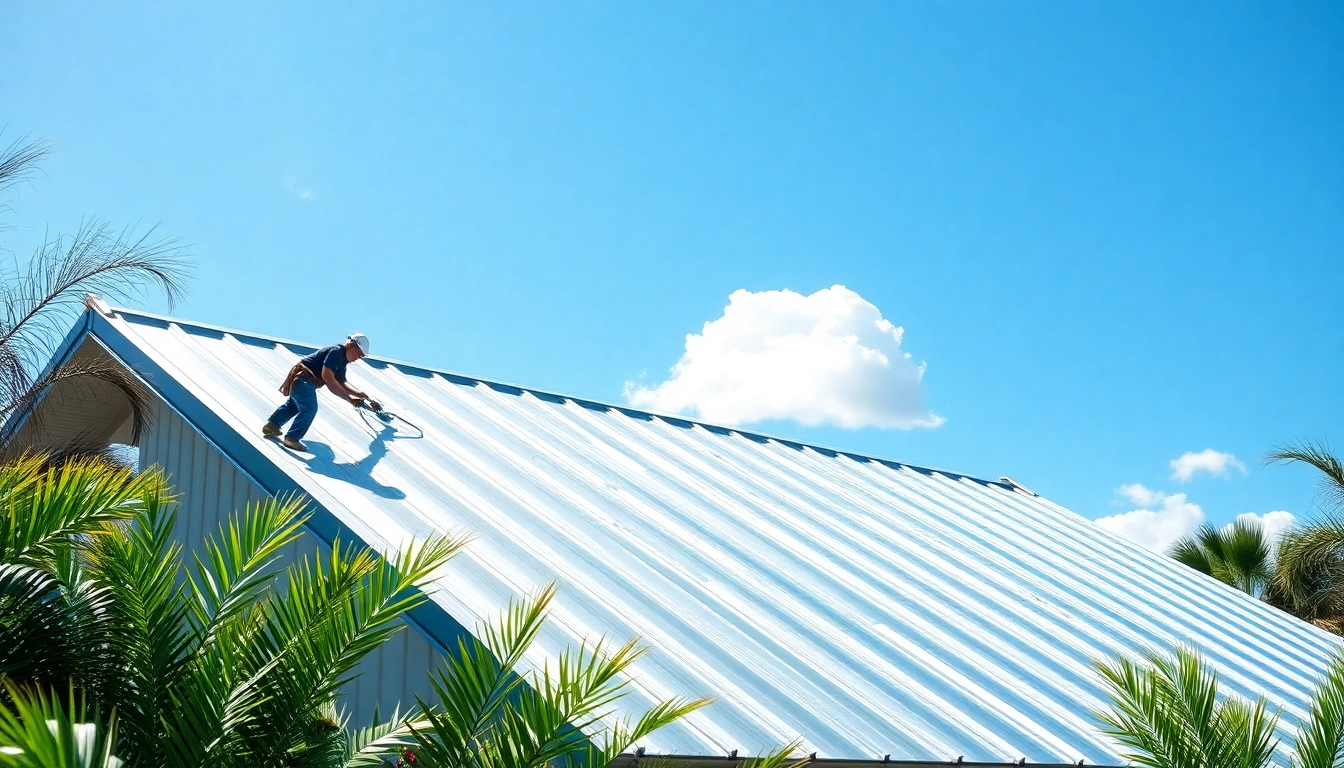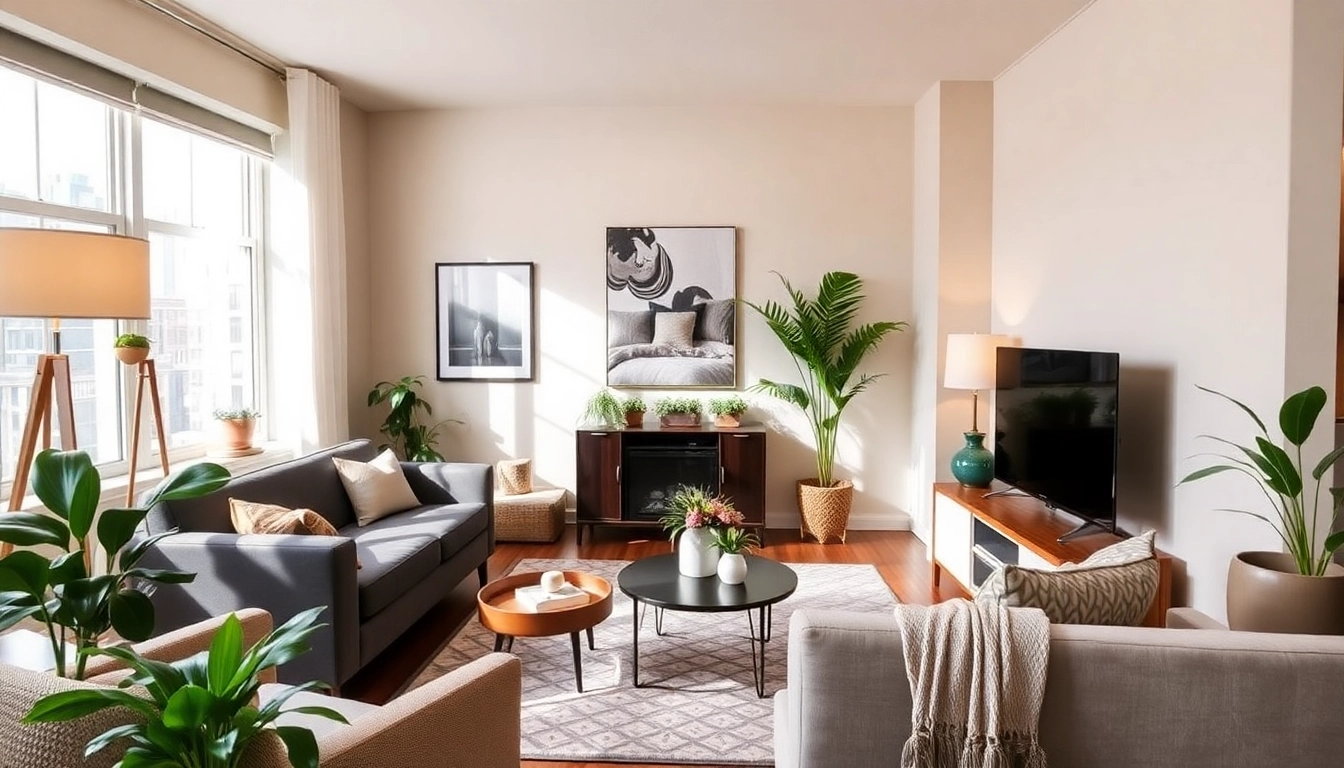Understanding Landscape Design Services
What Are Landscape Design Services?
Landscape design services encompass a systematic process of planning and creating outdoor spaces that are not only aesthetically pleasing but also functional and sustainable. It involves the integration of nature and human-made elements to develop environments like gardens, parks, and commercial properties that harmonize with the surroundings. With a focus on various aspects such as plant choice, layout, lighting, and irrigation, professionals in this field utilize their expertise to turn visions into reality. Hiring a landscape design service can enhance property value, improve ecological health, and provide enjoyment for years to come.
The Benefits of Hiring a Landscape Design Service
Engaging a professional landscape design service offers numerous benefits. Primarily, it brings expertise and experience into the project, ensuring that the landscape meets local climate, soil conditions, and vegetation types. Some of the critical advantages include:
- Personalized Designs: Professionals create custom designs aligned with the homeowner’s vision, style preferences, and functional requirements.
- Resource Efficiency: Experts can help optimize resources, including water usage, by introducing efficient irrigation systems and selecting drought-resistant plants.
- Time Savings: A landscape architect or designer can streamline the process, overseeing every phase from idea generation to implementation, thus saving the homeowner time and stress.
- Increased Property Value: Well-executed landscape designs can significantly raise property values, making homes more attractive to potential buyers.
Key Elements of Successful Landscape Design
Successful landscape design is rooted in several fundamental elements that work together to create harmonious outdoor spaces. These components include:
- Spatial Organization: The arrangement of different elements must create flow and functionality, allowing for ease of access and movement.
- Plant Selection: Choosing the right plants based on climate, soil type, and maintenance levels is crucial for long-term sustainability.
- Hardscape Features: Incorporating materials like stone, wood, or concrete for pathways and patios enhances the design’s practicality and style.
- Color and Texture: A thoughtful mix of colors, shapes, and textures can evoke emotion and enhance visual appeal.
- Sustainability Practices: Integrating eco-friendly practices, such as using native plants and water-efficient systems, improves environmental quality.
Choosing the Right Landscape Design Service
Factors to Consider When Selecting a Provider
When searching for the right landscape design service, several key factors should guide your selection process:
- Experience: Look for a service with a solid portfolio and positive reviews from previous clients, showcasing a range of successful projects.
- Specialization: Different services may excel in various areas—residential gardens, commercial properties, or sustainable practices—so choose one that aligns with your needs.
- Communication: An effective provider prioritizes open communication, listening to your ideas and providing valuable feedback throughout the design process.
- Licensing and Insurance: Ensure that the landscape design service is properly licensed and insured, protecting you from potential liabilities.
- Cost Transparency: Look for a service that provides clear, detailed estimates, avoiding hidden fees that could arise during the project.
Questions to Ask Your Landscape Design Service
Asking the right questions can help you assess a landscape design service’s capabilities and suitability for your project. Consider the following:
- What is your design process? Can you outline each stage from conception to completion?
- Can you provide references or examples of similar projects you’ve completed?
- What types of materials do you recommend, and why?
- How do you incorporate sustainability into your designs?
- What is your estimated timeline for completing this project?
Understanding Service Packages and Pricing
Landscape design services typically offer various packages, each tailored to different budgets and project requirements. It’s essential to understand what is included in each package by discussing:
- The variety of services offered (design, installation, maintenance).
- Payment structures, including upfront fees, deposit requirements, and final payment terms.
- Whether landscape maintenance is part of the service package or if it requires an additional contract.
- Options for custom packages that may better fit your specific needs.
Popular Landscape Design Trends
Eco-Friendly Landscaping Solutions
With the increasing focus on sustainability, eco-friendly landscaping solutions have emerged as powerful trends within landscape design. Options include:
- Native Plant Landscaping: Utilizing plants that are indigenous to your area to support local wildlife and reduce water consumption.
- Rain Gardens: Creating shallow depressions to capture and utilize rainwater, reducing runoff and promoting groundwater recharge.
- Permeable Hardscaping: Implementing surfaces that allow water to infiltrate, minimizing surface water accumulation and enhancing soil health.
Modern Designs vs. Traditional Aesthetics
Today’s landscape design often juxtaposes modern minimalism with traditional aesthetics, appealing to diverse homeowner preferences. Modern designs focus on:
- Simplicity: Clean lines, geometric shapes, and less clutter for a sleek look.
- Functional Spaces: Multi-use areas that serve relaxing, entertaining, and gardening needs.
Conversely, traditional aesthetics embrace:
- Symmetry: Balanced designs that evoke classic garden styles.
- Diverse Plant Selection: Incorporating a wide variety of blooming plants to create vibrant, colorful gardens.
Incorporating Native Plants in Your Landscape Design
Using native plants offers numerous benefits, including low maintenance, resilience against local pests, and increased biodiversity. To effectively integrate native plants:
- Research local species that thrive in your climate.
- Design landscapes that mimic natural ecosystems, providing habitats for local wildlife.
- Educate property owners on the ecological benefits of choosing native species over non-natives.
Implementing Your Landscape Design
Steps to Prepare for Your Landscape Project
Preparation is key to a successful landscape project. Follow these steps to ensure everything is in order:
- Define Your Goals: Clearly articulate what you want to achieve with your landscape design.
- Set a Budget: Evaluate your finances to understand how much you can invest in the project.
- Check Local Regulations: Investigate any permits you might need or community guidelines that could affect your design.
Collaboration with Your Landscape Design Service
Effective collaboration is essential for executing the vision successfully. Engage with your design service through:
- Regular updates and meetings to review progress and address concerns.
- Being open to adjustments in the design or timeline based on real-time feedback.
- Maintaining clear communication about expectations throughout the project.
Tools and Resources for Homeowners
Homeowners can utilize various tools and resources to facilitate the landscaping process:
- Design Software: Platforms like SketchUp help visualize the layout before physical implementation.
- Plant Databases: Online resources such as the USDA Plant Database aid in selecting appropriate plants.
- Local Gardening Communities: Joining local gardening clubs or online forums can provide support and advice.
Measuring Success in Landscape Design
Performance Metrics for Your Landscape Design Service
To measure the success of your landscape design service, establish clear performance metrics, such as:
- Project completion on time and within budget.
- The overall aesthetic appeal of the completed design compared to expectations.
- Client satisfaction and feedback metrics through surveys or informal check-ins.
Long-term Maintenance and Care Tips
Once the landscape design is completed, ongoing maintenance ensures its longevity. Adhering to the following tips can help:
- Regularly water your plants according to their specific needs, especially during dry spells.
- Implement annual or bi-annual soil tests to maintain healthy nutrient levels.
- Schedule seasonal pruning and weeding to keep plants healthy and prevent overgrowth.
Creating a Feedback Loop with Your Designer
Establishing a feedback loop between the homeowner and landscape designer enhances collaboration and project outcomes. This can include:
- Post-installation meetings to discuss successes and areas for improvement.
- Regular check-ins during the maintenance phase to address any emerging issues.
- Soliciting recommendations for future design elements or enhancements.



